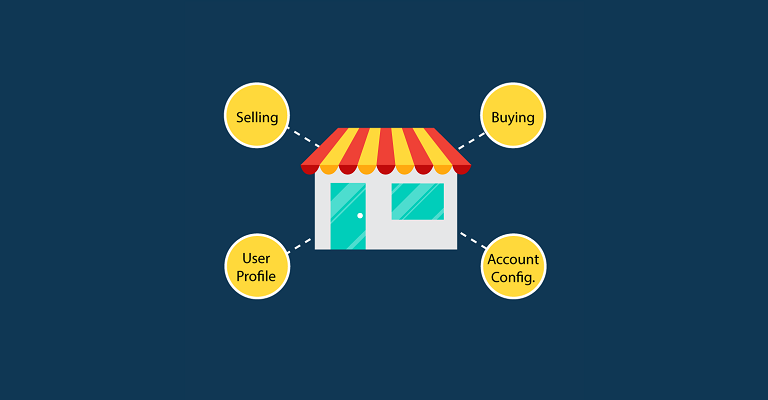
Theoretically, a micro job site design must include 4 main principles: buying, selling, profile settings, and account settings. According to your business model, these four principles are to be considered thoroughly to match the concept of your platform. That said, among these 4 fundamentals, selling and buying activities are the most important as they are responsible for triggering transactions between buyers and sellers on your micro job marketplace. Meanwhile, transactions are the ultimate purpose you aim to capture. Hence, a strong platform is more likely to handle micro job orders seamlessly.
This article will discuss in depth the first principle in a series of 4 principles to provide you with an overview about how to design your micro job marketplace and make it work effectively.
- Part 1 – Start selling micro jobs
- Part 2 – Buying on micro job site, Profile & Account settings
Principle 1 – Start selling micro jobs
For any kind of platform, the key mission is to get two sides of users on board at the same time. Particularly, in a micro job marketplace, you need to solve the “chicken and egg” problem to bring together service providers and buyers on site. Mentioning providers who offer services for sale on your platform, how should the user flow be designed to install all adequate functions for a seller? There are 4 main functions that should be available for sellers on your website.
Manage services
First of all, sellers sign up on your site to sell! Therefore, they will need a space to manage their services. What are required inside this function?
- Create services: Sellers should be able to post their jobs as separate ones or more advanced in job packages.
- Manage orders: Order management is the feature helping sellers control all the orders by job status so that they have an overview of which are finished, which are active and require priority.
- Revenue statistics: Next is about revenue the sellers have earned by offering services on your site. Usually when the number of orders a provider receives grows and reaches to the point that it is so hard for him to calculate how much he’s earned, income statistics listing all transaction history is very useful and ensures the transparency in your payment system.
Handle orders
Once a seller embarks on an order, there are some metrics to control and measure the progress to make sure the flow goes on smoothly or should anything happens you have some figures to count on.
- Deliver orders: After the buyer pays for an order, it is active and the seller will start to work on it. For digital products, the delivery system is recommended to integrated into your site so that sellers can pack the results and send it to buyers right on your platform. At this point, the order status will be updated to “Delivered”. Also, there might be a change log that records every changes made to the order so that you can easily review the progress in case of dispute.
- Dispute: This is an unwanted situation but it should still be available for sellers to hit the dispute button anytime they need it. Based on the changelog of the order, and other information provided by both parties, you will decide who’s the winner and gets the money.
Pay & Get paid
Sellers will pay to list their services on your site and get paid for finishing orders. Features needed to run this function include payment gateways, payment methods and money withdrawal.
- Payment gateways: Choose the gateways that are popular among your target customers. Usually PayPal is preferred for its worldwide availability, however; in case it is not offered in your local, pick other alternatives. You can also add Cash payment to your gateways.
- Payment methods: These will be user’s accounts you send the income to. Ask sellers to fill in their accounts to get paid.
- Money withdrawal: Withdrawing method should be designed in the way that gives your users comfort. You can establish a manual withdrawing process or the automated one. In the former method, you will manually transfer money to user’s account each time you’ve got a withdrawal request. Making it more advanced, you can turn this task into an automated process – the revenue will be released to user’s account based on a preset schedule. Which method to be chosen is up to your decision based on your business scale and technical competence.
Seller’s features
The third function discussed is features dedicated to seller’s side. There are a lot of features that you might want to design for your sellers. That said, in the scope of a micro job site, I will list several basic features you’d love to have.
- Service pricing: Based on your strategy, you might want to set a fixed price for all micro jobs (like in Fiverr), or allow a flexible pricing option and let the sellers decide price themselves.
- User levels: This level system is expectedly a motivation for sellers to perform well on your site. The higher the levels they achieve, the more orders sellers are likely to get.
- Add-ons: There are some extras you can add like embedding video in a service listing, or calculating shipping fee according to the location of buyers.
Above are four main functions and features that a micro job site is expected to have to offer a smooth platform for service providers. The next principle I will discuss is on the buyer’s side, and some notes for account and profile settings. Continue to the next post to read more in details.

